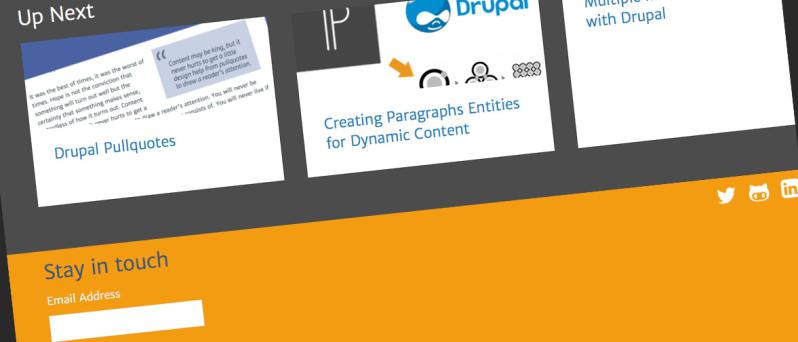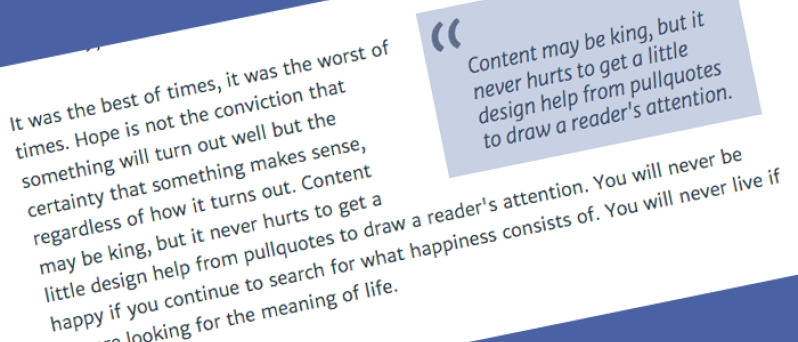Welcome! This site has been a while in the making, but I'm really excited to share it with you. Back in Austin at DrupalCon, I was inspired by Jeff Geerling's "Devops for Humans" presentation and immediately decided that I needed to start using Ansible. Well, it's been a long road, but the site is now live and I'm really looking forward to sharing the ups and downs of the journey. Oh, and if you don't have it already, Jeff's book Ansible for Devops is well worth it. More soon...
Up Next
Creating Reusable Dynamic Content Components
This is part 2 in this series that explores how to use paragraph bundles to store configuration for dynamic content. The example I built in part 1 was a "read next" section, which could then be added as a component within the flow of the page. The strategy makes sense for component-based sites and landing pages, but probably less so for blogs or content heavy sites, since what we really want is for each article to include the read next section at the end of the page. For that, a view that displays as a block would perfectly suffice. In practice, however, it can be really useful to have a single custom block type, which I often call a "component block", that has an entity reference revisions field that we can leverage to create reusable components.
Tags
Drupal Pullquotes
"Pullquotes", as described here, differ from blockquotes because they duplicate a section of text within the page, and get styled in a way that draws the reader's attention to the quote. As such, one simple solution that I've been using is to allow content editors to select a section of text while editing and click a button in the interface to designate it as a pullquote.
Tags
Creating Paragraphs Entities for Dynamic Content
The paragraphs module has become a central ingredient for many component-based sites in recent years. However, our content strategy also often requires components that display dynamic content (think "Read Next", or "Also of Interest"). In this tutorial, I'll demonstrate how we've been solving this problem, by building paragraph bundles that serve as configuration entities that we can then use as arguments that we pass to a view via the Twig Tweak module. You can see a working version of the dynamic content component we'll be building in the "Up Next" card grid at the bottom of this tutorial.
Tags


